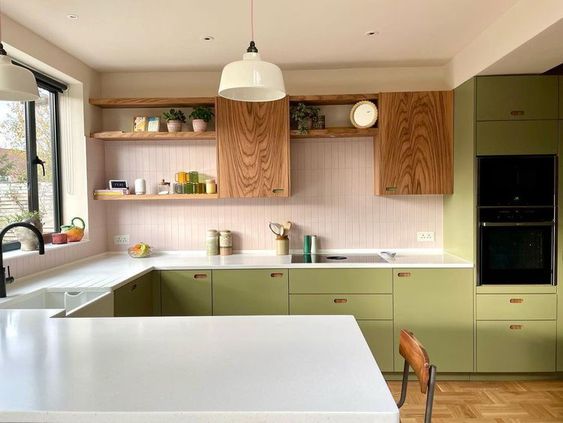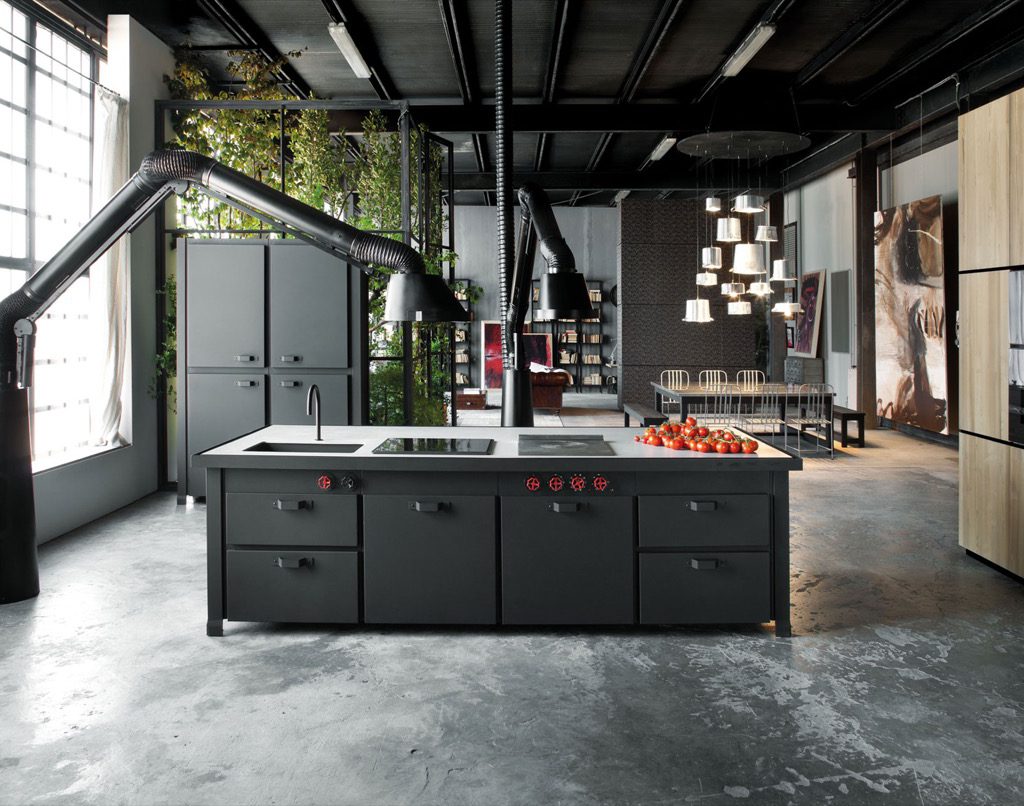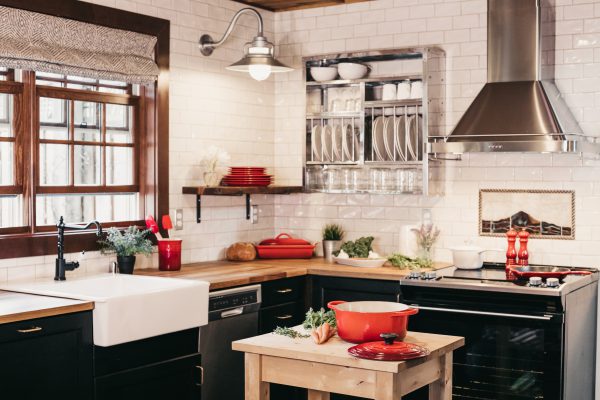Last Updated on June 10, 2023
From function to the statement, curtains always have a saying in interior design. An appropriate choice of curtains can really transform the feeling of the space, and kitchens are no exception.
Because curtains are very powerful design pieces, it’s quite important to do your diligence before deciding on one for your kitchen. Wondering which way to go? Read on to find out about the best curtain styles for your kitchen setting.
Kitchen Curtains: The Big Guns of Interior Design
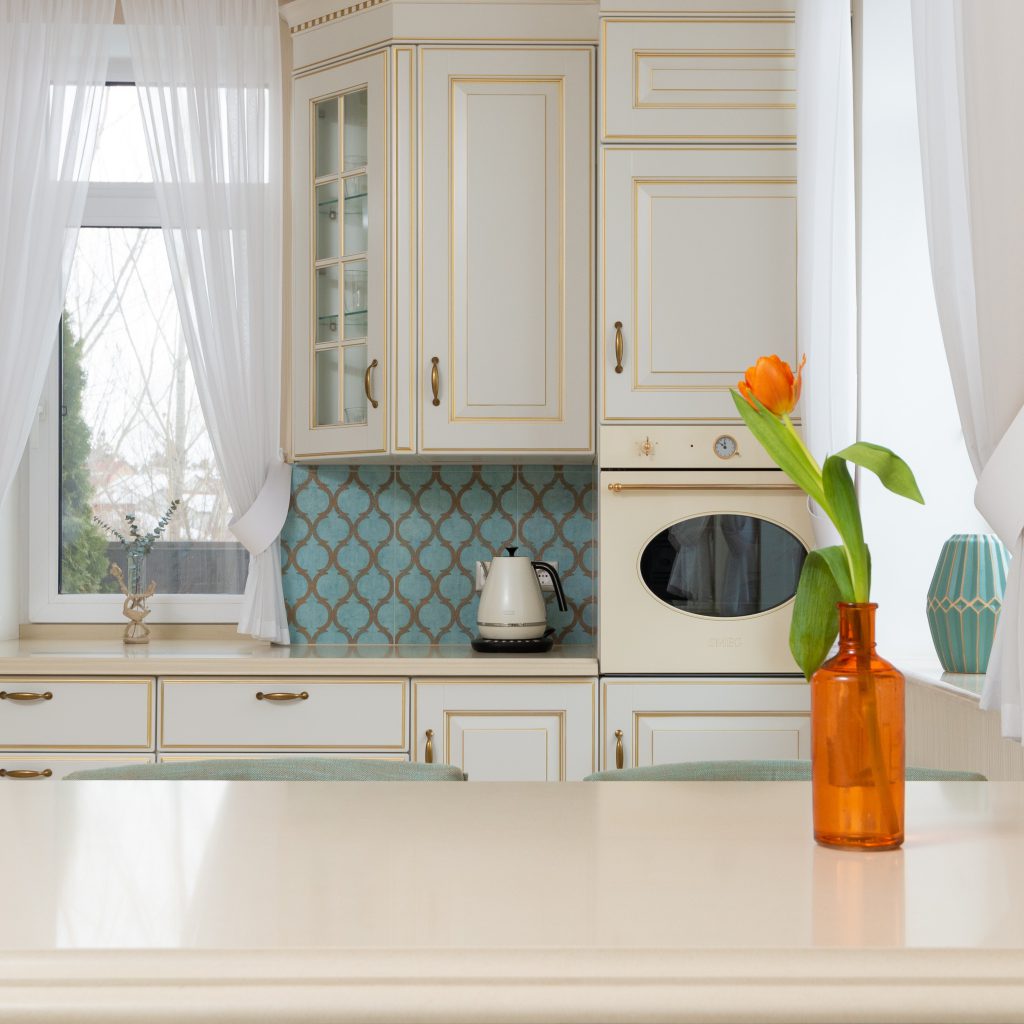
You’d be amazed to see how a simple curtain can change the look of a room. For example, you can create an optical illusion to make your windows appear larger or the ceiling higher just by positioning your curtains differently.
If you fancy a change of looks, redesigning your curtains is the easiest and cheapest way to achieve this. You can even change your curtains every season to freshen up the ambiance in your kitchen.
How to Choose Curtains for the Kitchen

We think looks are very important, and you should make your kitchen as pretty and inviting as you can. But in the world of interior design, form always follows function. A pretty space with bad design elements is like a pebble in a nice shoe. You always notice it’s there.
On top of that, window covering options are seemingly infinite. Drapes, blinds, shutters, and curtains are only a few of them, and you can choose from a huge variety of materials, textures, and fabric colors or go with materials like acrylic and wood.
If you’re feeling confused, don’t worry. Check out the questions we discuss below that can nudge you in the right direction when looking for something to dress your kitchen windows with.
What Is the Purpose of Kitchen Curtains?
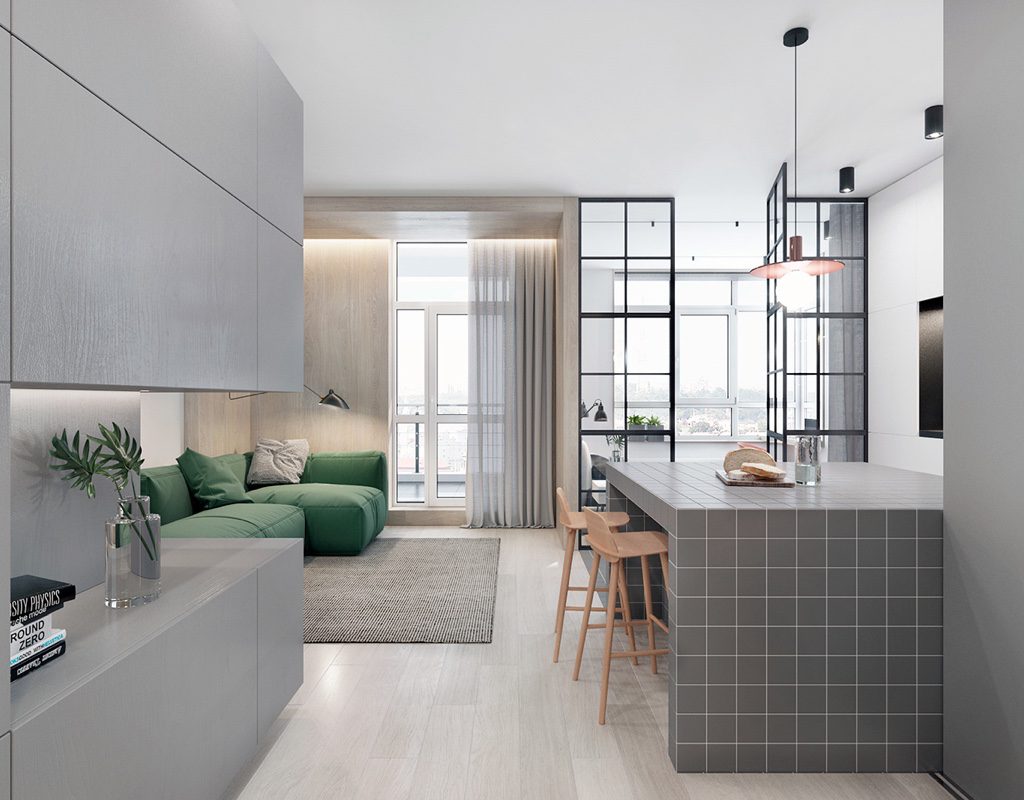
By lugerin
Curtains can have different functions in the home, from limiting the light to providing privacy or simply decor. Their purpose will dictate the translucency, color, and material you should be after.
If your main concern is privacy — you may have a window that faces your neighbors’ apartment or looks directly to the street — you can install curtains with screening materials that let the light through only in one direction.
This way, you won’t block the natural light coming in, and you’ll be able to see outside while blocking the view to your kitchen. Cafe curtains, roman shades, or zebra blinds that you can draw when you need to are perfect for the privacy you need.
Lighting in the kitchen is crucial, and natural light is always welcome. For that reason, you don’t want thick or blackout curtains. But if you live in a very hot climate, you might want to limit the sunlight during certain hours. The best thing to do in this case is to get reflective blinds. You can easily turn them to block the sun, plus the reflective surface helps keep the place cool.
Finally, you might want curtains just for their beauty. They are great for complementing or giving a twist to your kitchen. If you’re only looking for a way to brighten up the space and complement the overall atmosphere, this is your opportunity to let your creativity shine.
What’s the Architecture of Your Kitchen and Window?
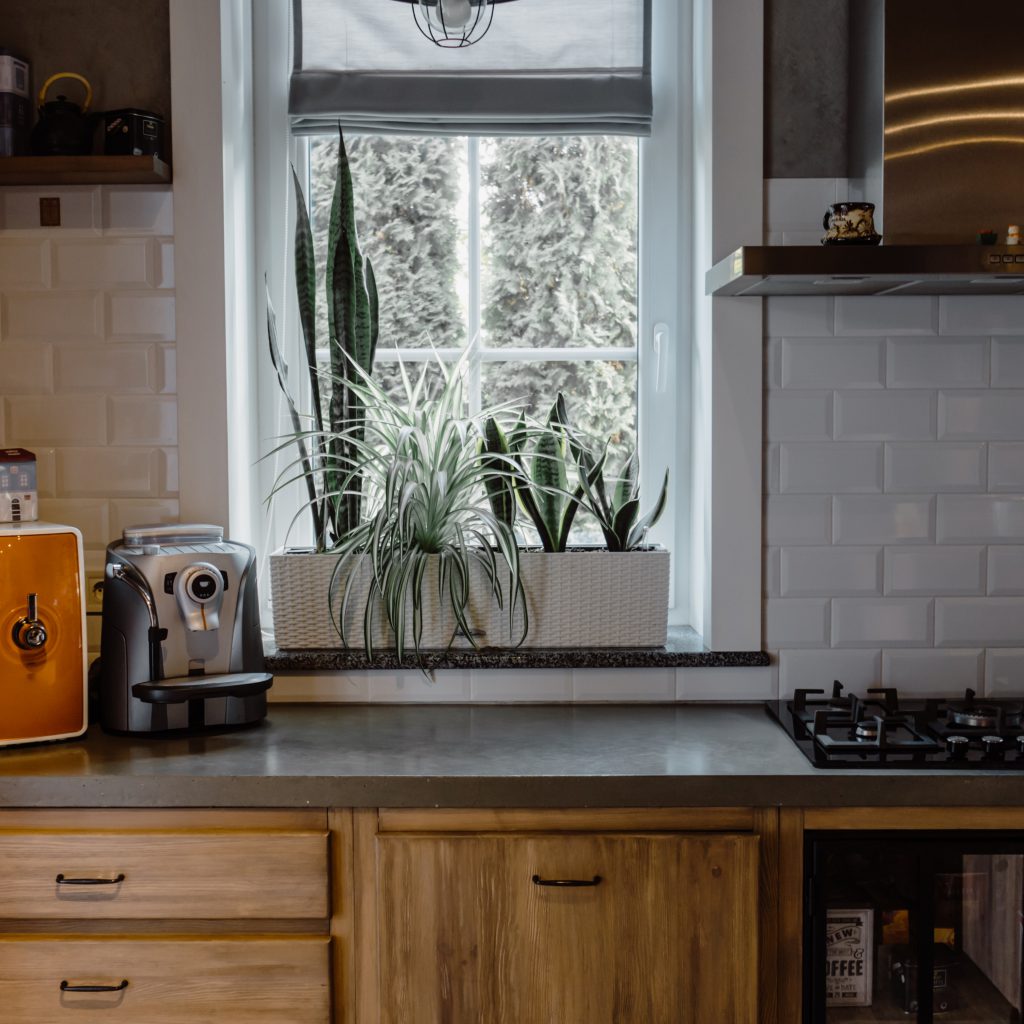
The architecture of your kitchen and window is the first thing you have to work with. How much space do you have to work with above, below, and on the sides of your window? How do they open, and what is their shape?
The answers to these questions have a saying in what kind of curtains you should install and how. For example, you don’t want blinds in front of a window that opens inwards.
Kitchen windows usually don’t have much empty space around them, as it makes more sense to use up that space for cabinets or other furniture. But if you have windows on a bare kitchen wall, you can install drapes that cover the empty wall to create an optical illusion, making the windows seem larger.
And lastly, if your kitchen is particularly small, small curtains like valances or cafe curtains with a bright color palette are best to make the place seem airier. And if you’re blessed with a big kitchen, darker, warm colors can balance the space and make it feel more inviting.
Curtains, Blinds, or Shutters?
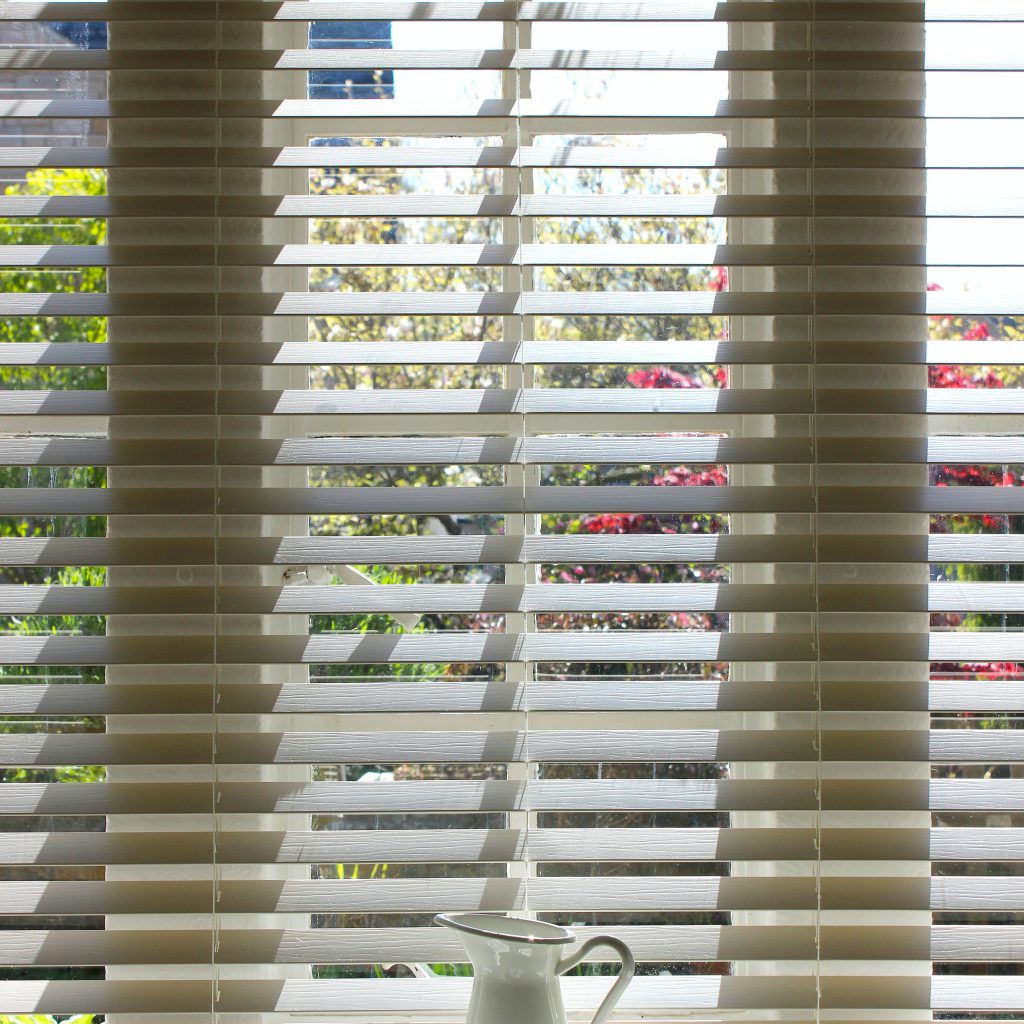
Curtains add a touch of elegance as well as coziness. They are also one of the easiest ways to introduce some texture to your space. Plus, curtains alter the acoustics in the room and make it more lively.
Having said that, the kitchen isn’t a great room for soft surfaces. It can get dirty, smelly, or even smoky. Plus, you want your kitchen to catch as much natural light as it possibly can. So if you have big windows and lots of space between them and your cooking area, by all means, go for curtains or even drapes.
However, for obvious safety reasons, you shouldn’t hang curtains close to the stove. If you do, ensure the material is non-flammable and won’t absorb the smells from the simmering pots immediately.
If you have a window just above your stovetop, shutters can save the day. Getting acrylic shutters is also a good idea, as their reflective quality can make your kitchen seem bigger than it is.
Lastly, blinds are the most common choice for the kitchen because of their practicality, and they are available in many different types.
What About the Design?

Installing curtains as statement pieces in the kitchen is one of the easiest ways to change the overall look. For that, you can go for bold pieces with bright hues or eye-catching patterns. Dark colors rarely work for kitchens unless you have lots of space that you want to compensate with some cozy fabric.
Using colors that match the furniture is another idea. This design style is a bit risky as it can be quite overpowering, but you’ll be okay as long as you use different shades of color and textures in your furniture and curtains. This way, everything looks coherent, but you also don’t lose the visual appeal of the space.
Any kitchen can use a dash of zing. If you have a neutral setting, consider installing curtains with bold geometric designs or patterns on them.
How Can Kitchen Curtains Complement Your Kitchen Style?
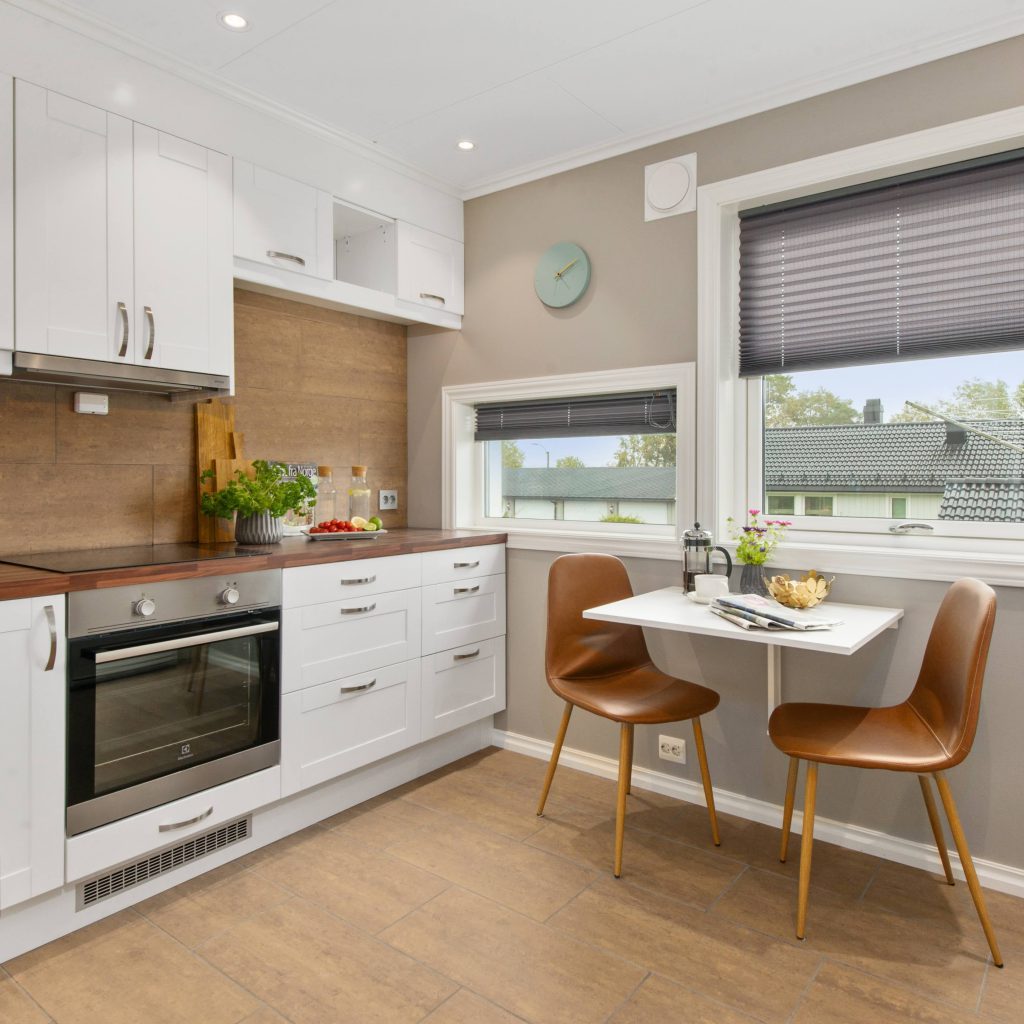
Like the music genres, there are many interior design styles – from fads to timeless classics. And new ones come up every day as people push the limits and question the boundaries between aesthetic concepts. After all, who says everything has to fit in a box?
Having said that, it’s usually useful to know the ideas behind some mainstream design trends. Once you do that, you can go all the way, mix and match your favorites, or you may even create your own statement. So let’s talk about how kitchen curtains can complement the overall style in your cooking space.
Traditional Kitchens

By Kamile
The traditional design is the most well-known style of all time, drawing inspiration from 18th-century France and England. You see a lot of furniture made of ornately detailed dark wood in traditional settings.
Luxury fabrics like silk, linen, or velvet are quite commonly used in traditional settings to underline the exquisiteness of the room. Perfect if you have large windows that let in lots of natural light too. Dress them with curtains made of these fabrics to make a statement.
But if your windows are close to the stovetop, or if you have a small kitchen with small windows, hanging a curtain made of luxury fabrics is not the best idea. In that case, consider hanging up valance curtains and introducing traditional patterns like floral or damask. And make sure they complement the color palette of your kitchen rug.
Modern Kitchens

By Ece Yetkin
When it’s pulled off nicely, modern design is sleek, sexy, and sophisticated. They keep clutter to a minimum and push forward reflective surfaces. Showcasing high-tech materials like a fancy coffee machine or a classic KitchenAid mixer rather than ornaments is a great idea.
If privacy isn’t a concern, a modern kitchen can go with no curtains. Let the natural light shine on the sleek lines in the room and the natural scenery to complement the overall atmosphere. But if you do need some sort of window dressing, then go with minimal roller blinds with little to no texture or shutters with similar attributes.
Contemporary Kitchens

By homestolove
It’s hard to pin down what’s contemporary design, as “contemporary” refers to here and now, so it really depends on what’s trendy today. But in a general sense, a contemporary kitchen balances eye-catching objects, art pieces — or furniture that look like art pieces — and curved but clean lines.
If you’re going for a contemporary kitchen, push form as well as function and hide away the clutter. Next, introduce accent objects, which might as well be the curtains.
Both curtains and shades can complement a contemporary kitchen. Use a clean and serene color palette with a hint of texture. You can use single or pair curtains depending on the size of your windows. Unless you have a plan, staying away from pleated curtains and valances is safer.
Transitional Kitchens
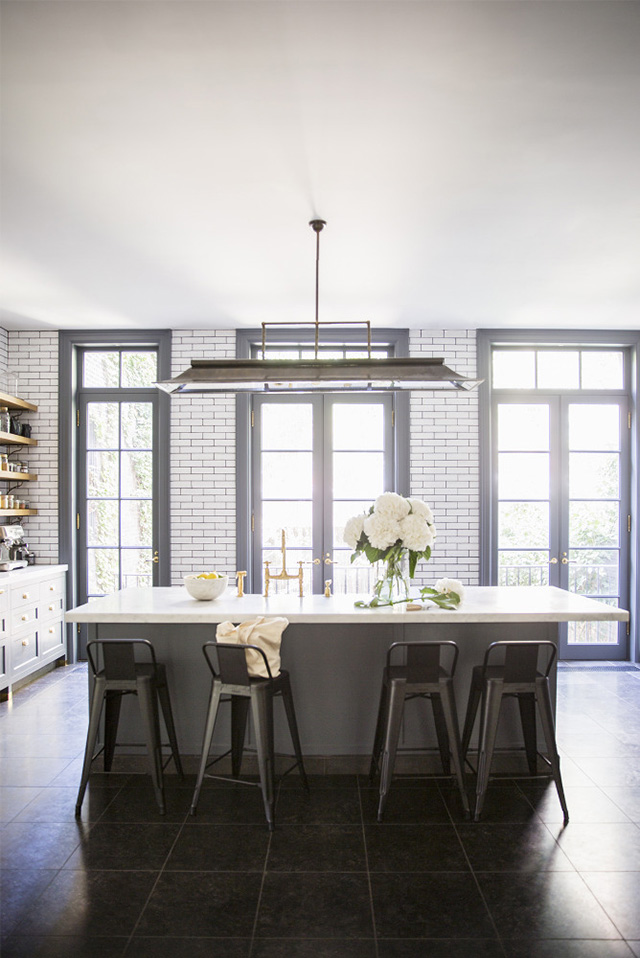
The transitional style is what interior designers like to call the happy medium of styles. It’s a great option if you think traditional is too stiff, but contemporary is too loud with statements. Transitional style lets you use traditional sophistication with contemporary lines.
Transitional interiors, especially kitchens, usually hide the stuff away as much as possible and keep the accessories to a minimum. That’s why it’s crucial to let the furniture and curtains do the talking.
If that resonates with you, opt for minimal curtains or blinds with some texture and patterns. You can let it catch the eye or complement the overall clean look of the room in an elegant way.
Minimalist Kitchens

Minimalist spaces look effortlessly easy, but they require strict rules, such as de-cluttering, a linear layout, a natural color palette, and simple-looking natural materials.
The best way to complement the simple lines in a minimalist kitchen is to install blinds or shades. You can go for a little texture or natural materials that complement the furniture, but stay away from curtains, drapes, and complicated patterns — unless you want your curtains to be the splash object, in which case, the curtain world is your oyster.
Rustic Kitchens
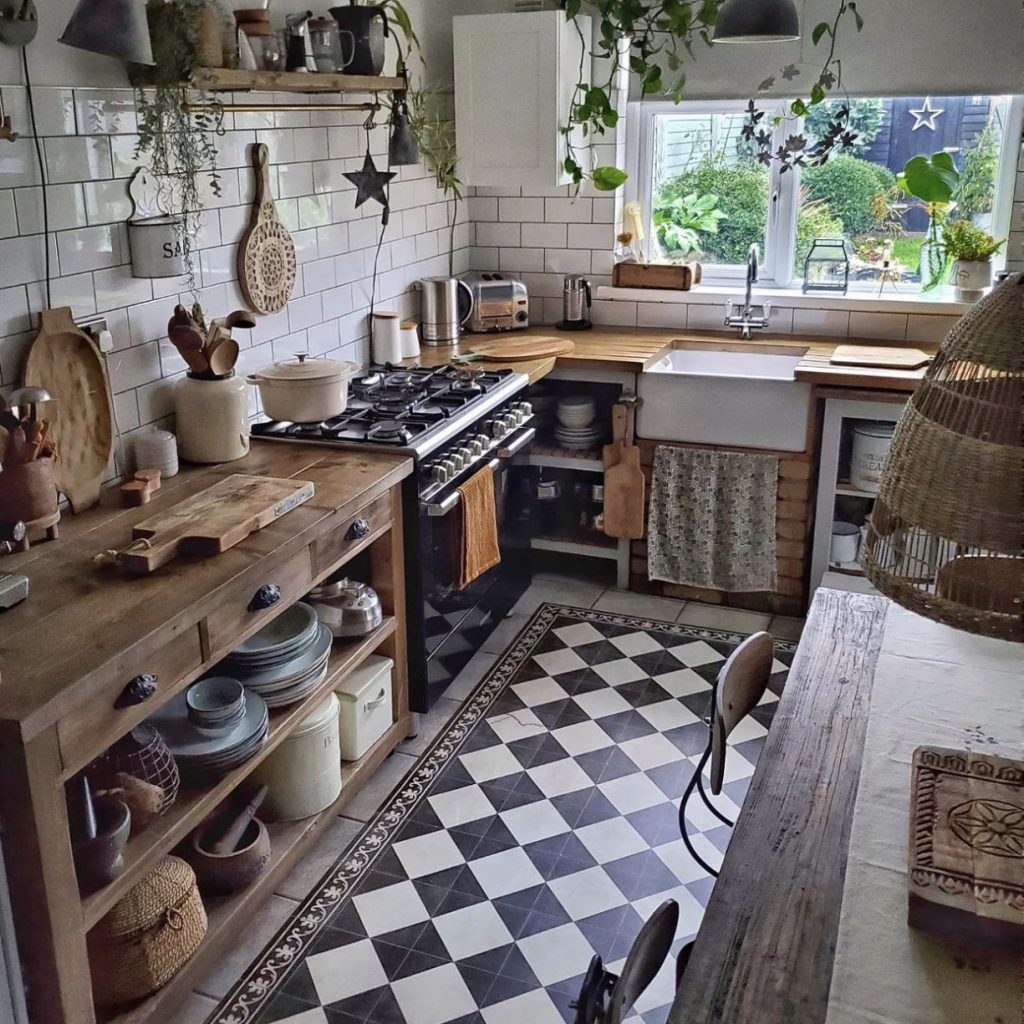
By lizmarieblog
Rustic interior design is one of the most favored styles for kitchens as it complements the livelihood in the house with natural touches. Rustic kitchens typically favor a soft color palette and relinquish the typical modern aesthetic with raw materials like wood, clay, brass, stone, and unpolished metals with an overall sense of DIY.
All blinds, shades, or curtains can complement the overall feeling in a rustic setting. Rods work well too. Make sure to emphasize the natural materials and textures. If you’re hanging a curtain, make sure it’s jute, cotton, or fabric with natural textures. Wooden blinds are always an option too.
If you don’t mind going all the way in the rustic design though, try installing patterned cafe curtains with pinch valances. It’ll make your kitchen look like a place where you can always find a jar of jam.
Bohemian Kitchens
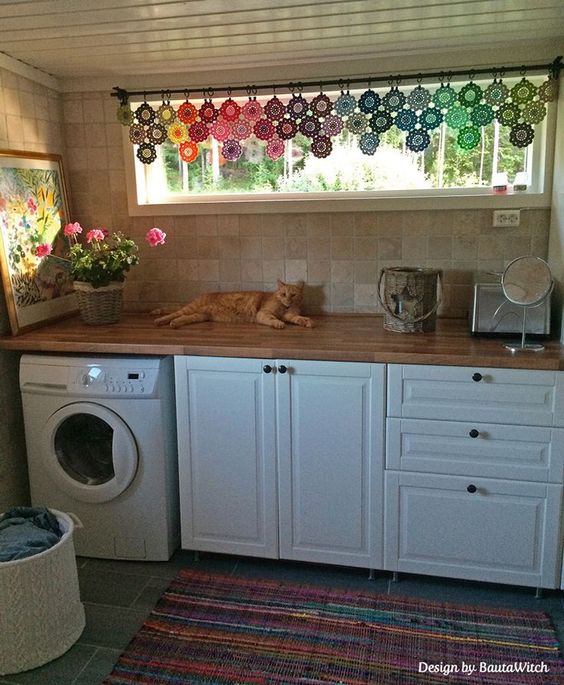
By Bauta Witch
Bohemian interior design is defined by a lack of structure. You’ll see a lot of carefree or even unapologetic layers of color, texture, and pattern. There are no hard rules when it comes to bohemian style, but to infuse the room with life, culture, and interesting objects.
You’re encouraged to free-spirited items, so you can really use interesting curtains. The only rule is to keep it interesting and full of character. So stay away from minimal stores or plain shades and take the kitchen windows as an opportunity to break the rules.
Hang handmade macrame curtains, roller blinds with interesting patterns, or drapes with vibrant shades of color. The beauty of the bohemian style is that you can get away with hanging a statement piece, such as glass, crystal, wood, or acrylic beaded curtains, and the eclectic style will happily embrace it.
Scandinavian Kitchens
Scandinavian interior design is one of the best ways to create a minimalist and modern space that also looks warm and inviting. The minimalist aesthetic and clean lines soften with natural materials, plenty of texture, a warm color palette, and layers of soft light that almost rile against the harsh Nordic winters.
If you have a kitchen designed in Scandinavian style, the most important thing is to complement the serene feeling in the room. Fabric is better at creating a cozy feeling than blinds or shutters. Go with either curtains or roller blinds and pick a color that compliments the overall color palette in the room, and turn the texture all the way up.
Industrial Kitchens
Exposed pipes and brick walls, wall-mounted rails, wood beams, and retro-looking appliances… Industrial kitchens can make a huge statement. This interior design style is often favored in bigger kitchens with a high ceiling and lots of open space, as it calls for an airy feeling to work its magic. Thus, tall and wide windows are one of the key features of these kitchens.
Another key to the good execution of industrial design is rough simplicity. Thanks to the open space that you hopefully have, you can go with black or darker colors as you please but be careful not to block the natural light coming in so as not to interfere with the open space feeling. If you’re going for darker colors, make sure your curtains or blinds are translucent.
You can also opt for panels that fall in straight folds rather than curtains that emphasize sophistication and creativity. Likewise, stay away from ruffles, frills, or tassels. If you must, go for rather laconic accessories like hooks or rods to hang the curtains. And make sure the materials complement your furniture, like the chairs or the stools.
Over and Out!
Curtains have great potential in terms of interior design. They aren’t only functional but one of the most impactful complements to the overall design and feel of the room. So don’t be afraid to cover your windows with style to brighten up the ambiance. You’ll be surprised how much it changes the overall feeling. After reading this article, we hope you get a step closer to your dream kitchen.


